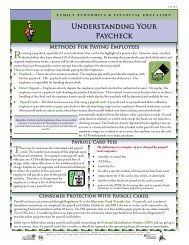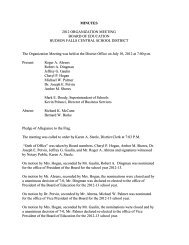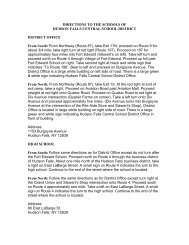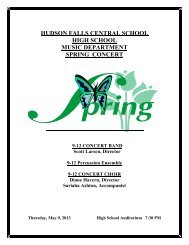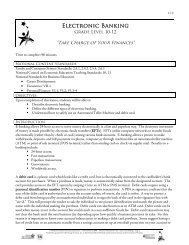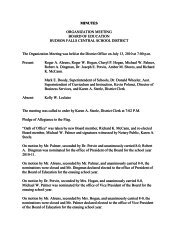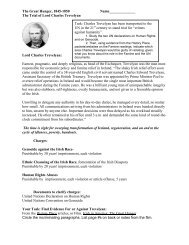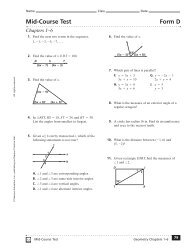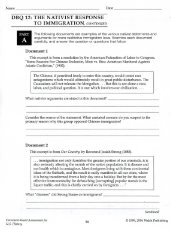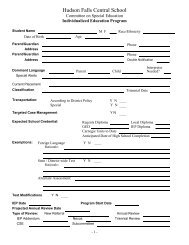You also want an ePaper? Increase the reach of your titles
YUMPU automatically turns print PDFs into web optimized ePapers that Google loves.
1.4.2Body1. Have the students read the <strong>Understanding</strong> <strong>Credit</strong> <strong>Reports</strong> information sheet 1.4.2.F1 the night before ashomework.2. To prepare the activity before class, cut up a set of the <strong>Credit</strong> Scenario cards 1.4.2.H1 and place into a hat orbox for students to draw.3. Ask students the following question.a. What is a credit report?i. A record of a consumer’s credit history (a record of transactions involving the use ofcredit).4. Tell students they will be participating in the <strong>Credit</strong> Scenario Activity.a. Write two headings on the board: Positive Effect on <strong>Credit</strong> and Negative Effect on <strong>Credit</strong>.b. Divide students into groups of two. Each group will draw one <strong>Credit</strong> Scenario card out of the box.i. Each card has a scenario which has either a positive or negative effect on a person’s credit.c. Each group will read the card out loud and decide whether it would have a negative or positive effecton one’s credit.i. Have the group post the answer on the board under the correct heading and explain theirdecision.d. Discuss the answer for each card with the class.5. After the activity, present the <strong>Understanding</strong> <strong>Credit</strong> <strong>Reports</strong> PowerPoint presentation 1.4.2.G1.a. Hand out the <strong>Understanding</strong> <strong>Credit</strong> <strong>Reports</strong> worksheet 1.4.2.A1 to be completed during thepresentation.6. Slides 1-4a. Define credit reports.b. Discuss the information on a credit report.7. Slides 5-7a. Discuss why it is important to build a credit history.b. Explain to students some ways to start building a credit history.c. Address the ways in which a credit history is not built.8. Slides 8-10a. Stress the importance of a positive credit history.b. Have students brainstorm ideas that might lead to a poor credit history.9. Slides 11-13a. Explain what a <strong>Credit</strong> reporting agency (CRA) does.b. Point out the three main credit reporting agencies.c. Who reports to CRA’s?10. Slides 14-15a. Explain how to request a credit report.b. Discuss who can review a person’s credit report if the person requests credit from them.11. Slides 16-19a. Discuss the two main errors on credit reports.b. Address the Fair <strong>Credit</strong> Reporting Act.c. Go through the steps to correct errors on a credit report.12. Slides 20-23a. Define a credit score.b. Discuss the five standard categories of scores.c. Describe other factors calculated into a credit score and what financial effect these scores have.13. Slide 24a. Conclusion14. Hand out the <strong>Credit</strong> Report Scenario worksheet 1.4.2.A2.© Family Economics & Financial Education – Revised April 2005 – <strong>Credit</strong> Unit – <strong>Understanding</strong> <strong>Credit</strong> <strong>Reports</strong> – Page 6Funded by a grant from Take Charge America, Inc. to Norton School of Family and Consumer Sciences at the University of Arizona



